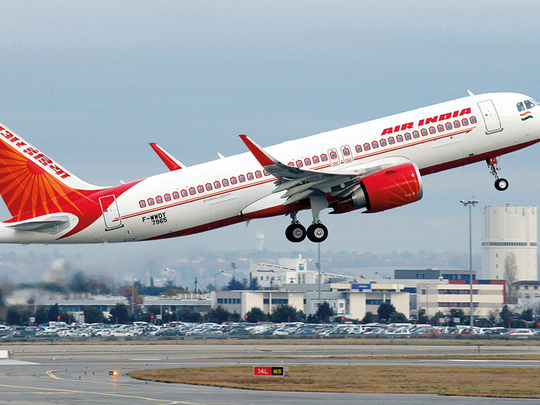
New Delhi: India is selling a controlling stake in its flagship carrier along with two-thirds of the loss-making airline’s about $7.8 billion (Dh28.6 billion) debt, as Prime Minister Narendra Modi moves ahead with the nation’s most high profile asset sale in decades.
The government will sell 76 per cent of Air India Ltd, according to a document uploaded on the civil aviation ministry’s website on Wednesday. The airline’s overseas budget carrier will be completely sold in the offer, while the state will sell a 50 per cent stake in the ground handling unit separately. The administration may also ask the buyer to conduct an initial public offering.
A successful sale of Air India, which is surviving on taxpayer-funded bailouts, is seen as test case for Modi to burnish his credentials as a reformist attempting to steer the state away from running businesses and boost spending on health and education. The national carrier has five subsidiaries, a joint venture and a combined workforce of as many as 27,000.
“Selling a 76 per cent stake is the second-best option for the government; the best option would have been to exit completely,” said Kapil Kaul, South Asia CEO at CAPA Centre for Aviation, “There’s also a caveat there that the acquirer will have to list the company, which means the government is looking at exiting through an IPO route, which is fair enough and very positive.”
Air India’s suitors
IndiGo, India’s biggest airline, is the only company to publicly disclose a desire to buy Air India’s airline operations — the most lucrative business that includes prime time slots at airports from New York to Heathrow, as well as bilateral rights to start flights to most countries. Singapore Airlines Ltd and India’s Tata Group, which run a joint venture airline named Vistara in India, said they were also open to look at the sale, but haven’t elaborated yet.
Selling a majority stake in the loss-making, 85-year-old company isn’t going to be a cakewalk. At least one attempt almost two decades ago failed amid fierce political opposition. The latest offer will include Rs333 billion ($5.1 billion) of debt that the buyer will have to take over with the balance going to the government.
India intends to sell the remaining stake in Air India, which may include selling shares during an initial share sale. The government will not sell shares in a block, according to the document.
Air India has been unprofitable since its 2007 merger with state-owned domestic operator Indian Airlines Ltd. The company made an operating profit of about Rs3 billion ($46 million) in the year through March 2017, primarily due to a slump in oil prices. It still posted a net loss of Rs57.7 billion, junior aviation minister Jayant Sinha told lawmakers on February 8.
Indian regulations allow a foreign airline to buy as much as 49 per cent of a local carrier, while overseas investors other than airlines can buy an entire carrier. Modi in January tweaked rules in January to include Air India which wasn’t a part of those rules until then.
Air India started as Tata Airlines in 1932 and later became state-owned. Founded by Jehangir Ratanji Dadabhoy Tata, it took off flying mail between Karachi in then-undivided, British-ruled India and Bombay. Once it turned commercial, the airline quickly became popular with its advertisements featuring Bollywood actresses, high-end champagne and surrealist painter Salvador Dali-designed porcelain ashtrays.












